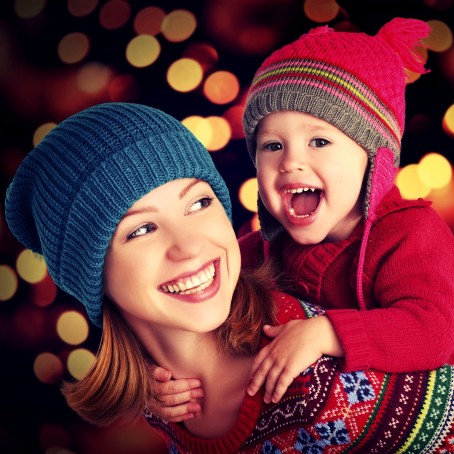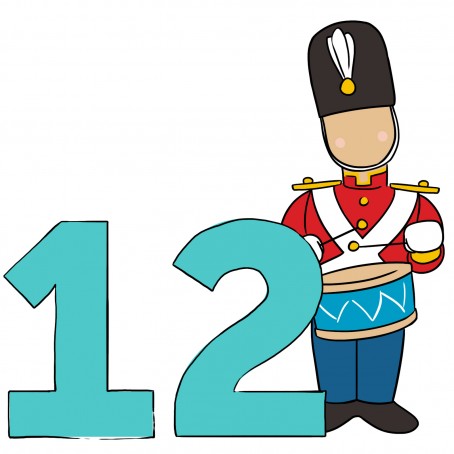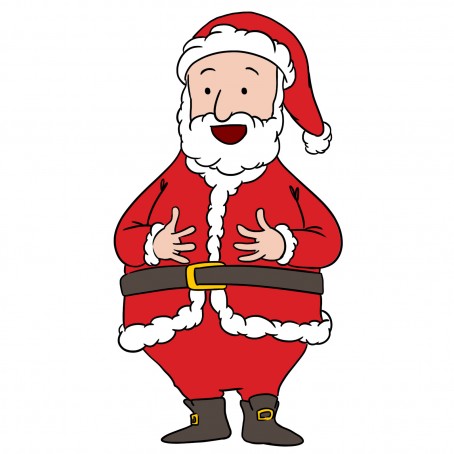Do you know any ways to wish someone a ‘Merry Christmas’ in Cantonese? CantoneseClass101 brings you easy-to-learn translations and the correct pronunciation of Cantonese Christmas phrases!
Christmas is the annual commemorative festival of Christ’s birth in the Western Christian Church. It takes place on December 25th and is usually celebrated with much food and fanfare! However, not all cultures celebrate Christmas. In some countries, Christmas is not even a public holiday! However, many countries have adapted Christmas and its religious meaning to tally with their own beliefs, or simply in acknowledgment of the festival’s importance to other cultures. If you want to impress native Cantonese speakers with culturally-appropriate Christmas phrases and vocabulary, CantoneseClass101 will teach you the most important ways to wish someone a ‘Merry Christmas’ in Cantonese!
Table of Contents
- How to Celebrate Christmas in Hong Kong
- Holiday Greetings and Wishes
- Must-Know Christmas Day Vocabulary
- Twelve Days of Christmas
- Top 10 Christmas Characters
- How CantoneseClass101 Can Help You
1. How to Celebrate Christmas in Hong Kong
Let’s see how Hong Kong people celebrate Christmas!
Now, before we go into more detail, I’ve got a question for you-
Can you guess how much a Christmas dinner usually costs at a hotel in Hong Kong?
If you don’t already know, you’ll find out a bit later, so keep reading!
Hong Kong has a nice Christmas atmosphere, with everyone busy getting ready for all kinds of parties. At these parties, as is typical of Christmas celebrations in most cultures, gifts are exchanged. Exchanging gifts is 交換禮物 in Cantonese. Everyone has to go shopping for gifts beforehand to have something to exchange. All the shops in town have bargain sales, or 減價, to encourage people to buy more than they need to increase profits.
Do you know which places in Hong Kong are most popular and beautifully decorated during the Christmas season? The most popular places are Harbour City, 1881 Heritage, and the Peninsula Hotel in Tsim Sha Tsui; Times Square in Causeway Bay; the Statue Square in Central; and Hong Kong Disneyland on Lantau Island.
Many buildings and skyscrapers next to Victoria Harbour put up Christmas light displays, or 燈飾 in Cantonese. If you want to see the light displays, ride the Star Ferry or 天星小輪 in Cantonese, and see the marvelous night-time scenery on both sides of the harbor.
The biggest difference between Christmas in Hong Kong and in Western countries is the Christmas dinner. Rather than enjoying it at home, most people in Hong Kong eat at restaurants and hotels, or have food catered in. Catering is 到會 in Cantonese. All the restaurants and hotels promote set menus or buffet services with Christmas themes. These meals are called 聖誕大餐. It’s very difficult to get a seat if you don’t make a reservation weeks in advance.
It never snows in Hong Kong, so some shopping malls provide fake snow, fake snowmen, and icy displays to fabricate a Christmas environment to attract customers. Because of the hot weather, there are no outdoor ice-skating rinks in Hong Kong, but you can find several indoor ice rinks. In Cantonese, ice rinks are called 溜冰場. Those who want to enjoy Christmas on ice can visit these spots.
Now it’s time to answer our quiz question-
Do you know how much a Christmas dinner usually costs at a hotel in Hong Kong?
The average cost for Christmas dinner at a hotel in Hong Kong is 650 Hong Kong dollars per person, which is roughly 85 US Dollars.
2. Holiday Greetings and Wishes for the Holiday Season
1- Merry Christmas!
聖誕快樂!
sing3 daan3 faai3 lok6!
Do you know how to say ‘Merry Christmas’ in Cantonese? Learn here how to pronounce it perfectly! ‘Merry’ means to be joyful, to celebrate and generally be in good spirits. So, with this phrase you are wishing someone a joyful, celebratory remembrance of Christ’s birth!
2- Happy Kwanzaa!
寬扎節快樂!
fun1 zaat3 zit3 faai3 lok6!
Surprise your African-American, or West African native friends with this phrase over the Christmas holidays! Kwanzaa is a seven-day, non-religious celebration, starting on Dec 26th each year. It has its roots in African American modern history, and many people celebrate both Kwanzaa and Christmas!
3- Have a happy New Year!
新年快樂!
san1 nin4 faai3 lok6!
In countries where Christmas is not officially celebrated, but a Gregorian calendar is observed, this would be a friendly festive-season wish over New Year.
4- Happy Hanukkah!
光明節快樂!
gwong1 ming4 zit3 faai3 lok6!
Hanukkah is the beautiful Hebrew festival over November or December each year. It is also called the ‘Festival of Lights’ and is celebrated to commemorate the Jewish freedom of religion.
5- Have a great winter vacation!
希望你有一個好好嘅寒假!
hei1 mong6 nei5 jau5 jat1 go3 hou2 hou2 ge3 hon4 gaa3!
This is a good phrase to keep handy if someone doesn’t observe any religious festival over the Christmas holidays! However, this will only be applicable in the Northern hemisphere, where it is winter over Christmas.
6- See you next year!
下年見!
haa6 nin2 gin3!
Going away on holiday over Christmas season, or saying goodbye to someone about to leave on vacation? This would be a good way to say goodbye to your friends and family.
7- Warm wishes!
溫馨嘅祝福! 溫馨嘅祝福!
wan1 hing1 ge3 zuk1 fuk1!
An informal, friendly phrase to write in Cantonese Christmas cards, especially for secular friends who prefer to observe Christmas celebrations without the religious symbolism. It conveys the warmth of friendship and friendly wishes associated with this time of year.
8- Happy holidays!
假期愉快!
gaa3 kei4 jyu6 faai3!
If you forget how to say ‘Merry Christmas!’ in Cantonese, this is a safe, generic phrase to use instead.
9- Enjoy the holidays!
享受你嘅假期!
hoeng2 sau6 nei5 ge3 gaa3 kei4!
After saying ‘Merry Christmas’ in Cantonese, this would be a good phrase with which to wish Christmas holiday-goers well! It is also good to use for secular friends who don’t celebrate Christmas but take a holiday at this time of the year.
10- Best wishes for the New Year!
祝你喺新嘅一年萬事如意!
zuk1 nei5 hai2 san1 ge3 jat1 nin4 maan6 si6 jyu4 ji3!
This is another way of wishing someone well in the New Year if they observe a Gregorian calendar. New Year’s day would then fall on January 1st.
3. Must-Know Christmas Day Vocabulary
Christmas is associated with many traditions and religious symbols in multiple countries across the world. It originated centuries ago in the West with the birth of Christianity, and the celebrations are often embedded with rich cultural significance. So, by now you know how to say Merry Christmas in Cantonese! Next, learn pertinent vocabulary and phrases pertaining to Christmas, as well as how to pronounce them correctly. At CantoneseClass101, we make sure you sound like a native speaker!
1- Christmas
聖誕節
sing3 daan3 zit3
This is the Cantonese word for ‘Christmas’. Most happy Christmas wishes in Cantonese will include this word!
2- Snow
雪
syut3
In most Northern-hemisphere countries, Christmas is synonymous with snow, and for Christmas, the snowman is often dressed as Santa Claus.
3- Snowflake
雪花
syut3 faa1
Snowflakes collectively make up snow. A single snowflake is small, white, light like a feather and icy cold! When put under a microscope, the snowflake reveals itself to have the most beautiful, symmetrical patterns. These patterns have become popular Christmas decorations, especially in Western countries.
4- Snowman
雪人 (n)
syut3 jan4
As you guessed – a snowman is only possible to build if it is snowing! What a fun way to spend Christmas day outside.
5- Turkey
火雞
fo2 gai1
Roast turkey is the traditional main dish on thousands of lunch tables on Christmas day, mainly in Western countries. What is your favorite Christmas dish?
6- Wreath
花圈
faa1 hyun1
Another traditional Western decoration for Christmas, the wreath is an arrangement of flowers, leaves, or stems fastened in a ring. Many families like to hang a Christmas wreath outside on their houses’ front doors.
7- Reindeer
紅鼻馴鹿魯道夫
hung4 bei6 seon4 luk2 lou5 dou6 fu1
Reindeer are the animals commonly fabled to pull Santa Claus’ sled across the sky! Western Christmas folklore tells of Father Christmas or Santa Claus doing the rounds with his sled, carrying Christmas presents for children, and dropping them into houses through the chimney. But who is Santa Claus?
8- Santa Claus
聖誕老人
sing3 daan3 lou5 jan4
Santa Claus is a legendary and jolly figure originating in the Western Christian culture. He is known by many names, but is traditionally depicted as a rotund man wearing a red costume with a pointy hat, and sporting a long, snow-white beard!
9- Elf
小精靈
siu2 zing1 ling4
An elf is a supernatural creature of folklore with pointy ears, a dainty, humanoid body and a capricious nature. Elves are said to help Santa Claus distribute presents to children over Christmas!
10- Rudolph the Red-Nosed Reindeer
紅鼻馴鹿魯道夫
hung4 bei6 seon4 luk2 lou5 dou6 fu1
‘Rudolph the Red-Nosed Reindeer’ is a Christmas song based on an American children’s story book with the same name. Rudolph is one of Santa’s reindeer. The song became more famous than the book, and can still be heard playing in many shopping malls over Christmas time across the globe!
11- North Pole
北極
bak1 gik6
The cold North Pole is where Santa Claus is reputed to live with his reindeer!
12- Sled
雪橇
syut3 hiu1
A sled is a non-motorised land vehicle used to travel over snow in countries where it snows a lot, and is usually pulled by animals such as horses, dogs or reindeer. This one obviously refers to Santa’s sled! Another word for sled is sleigh or sledge.
13- Present
禮物
lai5 mat6
Gift or present giving is synonymous with Christmas Eve and the greatest source of joy for children over this festive time! This tradition signifies that Christ’s birth was a gift to mankind, but not all people who hand out presents over Christmas observe the religious meaning.
14- Bell
鐘
zung1
On Christmas Day, or Christmas Eve, many religious celebrants enjoy going to church for a special sermon and Christmas rituals. The start of the sermon is often announced with bells or a bell, if the church has one. For this reason, the sound of ringing bells is often associated with Christmas Day.
15- Chimney
煙通
jin1 tung1
The chimney is the entrance Santa Claus uses to deliver children’s presents on Christmas Day, according to folklore! Wonder how the chubby man and his elves stay clean…?!
16- Fireplace
火爐
fo2 lou4
In most countries where it snows, Christmas is synonymous with a fire or burning embers in houses’ fireplaces. Families huddle around its warmth while opening Christmas presents. Also, this is where Santa Claus is reputed to pop out after his journey down the chimney!
17- Christmas Day
聖誕日
sing3 daan3 jat6
This is the official day of commemorative celebration of Christ’s birth, and falls each year on December 25.
18- Decoration
裝飾
zong1 sik1
Decorations are the colourful trinkets and posters that make their appearance in shops and homes during the Christmas holiday season in many countries! They give the places a celebratory atmosphere in anticipation of the big Christmas celebration. Typical Christmas decorations include colorful photographs and posters, strings of lights, figurines of Santa Claus and the nativity scene, poinsettia flowers, snowflakes and many more.
19- Stocking
聖誕襪
sing3 daan3 mat6
According to legend, Santa Claus places children’s presents in a red stocking hanging over the fireplace. This has also become a popular decoration, signifying Christmas.
20- Holly
冬青
dung1 cing1
Holly is a shrub native to the UK, and parts of Europe, Africa and Asia. It is characterised by glossy, spiny-toothed leaves, small, whitish flowers, and red berries. Ironically, its significance for Christmas relates to Christ’s crucifixion and suffering rather than his birth. However, the leaves’ distinctive shape and image have become popular Christmas decorations.
21- Gingerbread house
姜餅屋
goeng1 beng2 uk1
According to legend, the gingerbread house synonymous with Christmas is related to Christ’s birth place, Bethlehem. Bethlehem literally means ‘House of Bread’. Over centuries, it has become a popular treat over Christmas time in many non-religious households as well.
22- Candy cane
士的糖
si6 dik1 tong2
According to folklore, Christmas candy canes made their appearance first in Germany in the 16th century. A choir master gave children the candy canes to suck on in church in order to keep them quiet during the Christmas sermon! Apparently, the candy is shaped like a cane in remembrance of the shepherds who were the first to visit the baby Jesus. Today, like gingerbread houses, they are still a popular sweet over the festive season!
23- Mistletoe
槲寄生
huk6 gei3 sang1
Mistletoe is a parasitic plant that grows on certain trees. In the Middle Ages, it was believed that the mistletoe has magical powers, and could protect a household from evil if hung above a door during December. The belief didn’t last but the habit did, and the mistletoe is another popular Christmas decoration!
4. Twelve Days of Christmas
Wow, you’re doing extremely well! You know how to wish someone a Merry Christmas in Cantonese, and you learned pertinent vocabulary too! The Twelve Days of Christmas is not very well known in modern times, so, you’re on your way to becoming an expert in Christmas traditions and rituals. Well done!
The Twelve Days of Christmas, also known as Twelvetide, is a traditional festive period of 12 days dedicated to celebrate the nativity of Christ. Christmas Day is, for many who observe Twelvetide, the first day of this period.
‘The Twelve Days of Christmas’ is also a popular Christmas song about a series of gifts given on each day of Twelvetide. According to experts, these gifts were created as a coded reference to important symbols in the Christian church. Here is a list of those gifts mentioned in the song! Do you recognise them?
5. Top 10 Christmas Characters in American Culture
This is fantastic, you know how to explain almost everything about Christmas in Cantonese! However, do you know the most popular Christmas characters in American culture? Your knowledge will not be complete without this list.
6. CantoneseClass101 Is One Of The Best Online Language Schools Available!
We don’t just say this – we can prove it! Geared to your personal needs and goals, we have several learning paths from which to choose. From Cantonese for Absolute Beginners to Advanced Cantonese, lessons are designed to meet you where you are, and increase your language abilities in fun, easy and interactive lessons! Mastering a new language has never been this easy or enjoyable.
We have over a decade of experience and research behind us, and it shows! With thousands of audio and video lessons, detailed PDF lessons and notes, as well as friendly, knowledgeable hosts, CantoneseClass101 is simply unbeatable when it comes to learning correct Cantonese. Plenty of tools and resources are available when you study with us. New lessons are added every week so material remains fresh and relevant. You also have the option to upgrade and enjoy even more personalised guidance and services. This is a sure way to fast-track your learning!
So, this Christmas, why don’t you give yourself a present and enroll in CantoneseClass101? Or give an enrollment as a present to a loved one. It will be a gift with benefits for a whole lifetime, not just over Christmas!
















